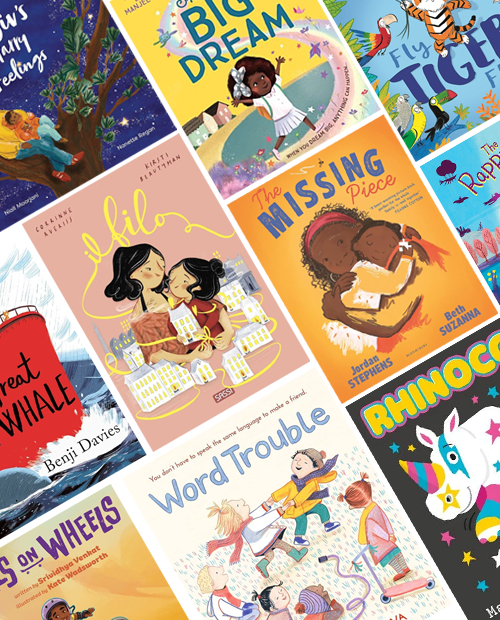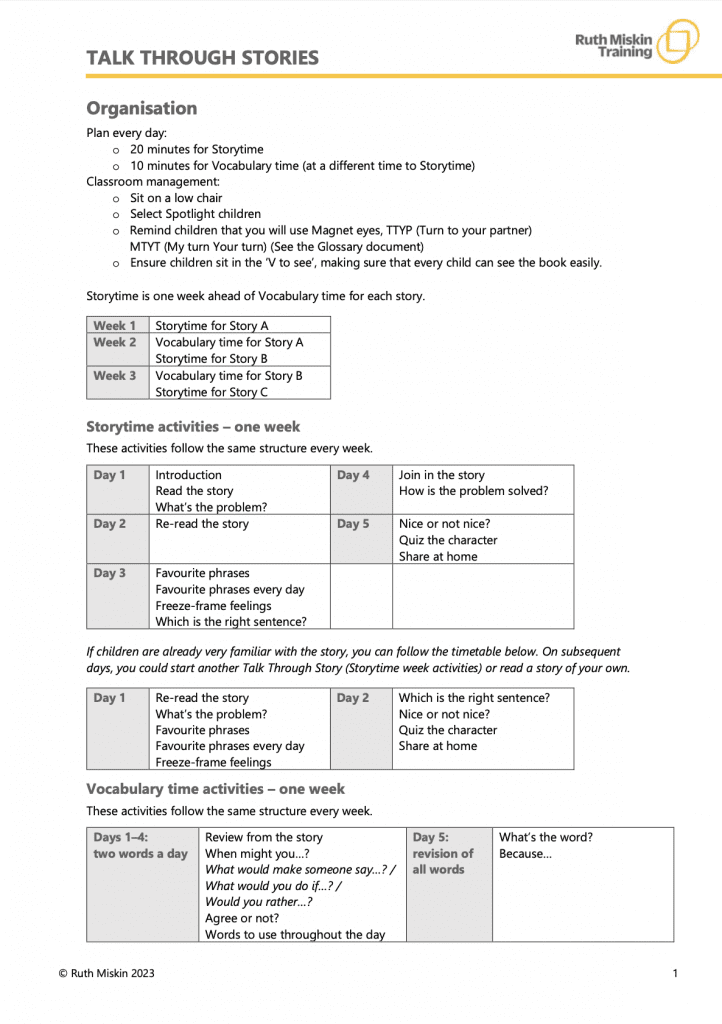
About Talk Through Stories
In a nutshell
Talk Through Stories is for four to six-year-old children. It is especially for those who do not come from a language-rich home.
We help children love each story and go on to use ‘Tier Two’ words (words they rarely encounter in every day conversation) from the story in everyday contexts.
This extends and deepens vocabulary so that children can understand the books they will soon be able to read for themselves.

How does it grow children’s vocabulary and comprehension?
- Talk Through Stories grows children’s vocabulary through partner talk. Children need to talk, if we are to develop their language.
- In Story week, children get to know – and love – the story through talk: they understand the plot, the characters, and their actions and motives.
- In Vocabulary week, the talk focuses on eight words from the story. These are words that children are unlikely to hear in everyday conversation but are likely to come across in stories. For example, in I’m in charge by Jeanne Willis, we chose bellowed, startled, barged, sneaked, grinned, dreadful, stomped, refused.
- Children develop their understanding of each word by using the words in the context of their everyday lives.
Time required for teaching
All you need is:
- your usual 20 minutes for storytime
- a further, separate 10 minutes for vocabulary time.
And a bit of time for you to practise before each lesson.
The stories
We chose stories that we believe are worth reading and re-reading – stories that children will love. We began with old favourites that many teachers are likely to know, such as Can’t You Sleep, Little Bear? by Martin Waddell and Where the Wild Things Are by Maurice Sendak.
We then moved on to more recent literature, such as Perfectly Norman by Tom Percival and I am Nefertiti by Annemarie Anang and Natelle Quek.
Watch one of our online training films.

